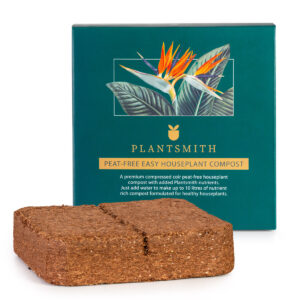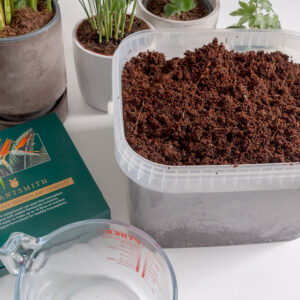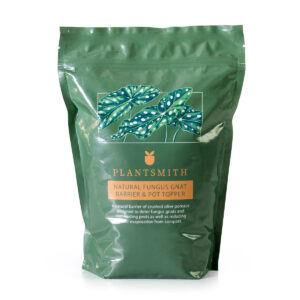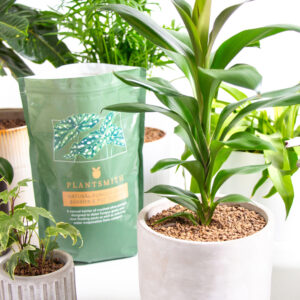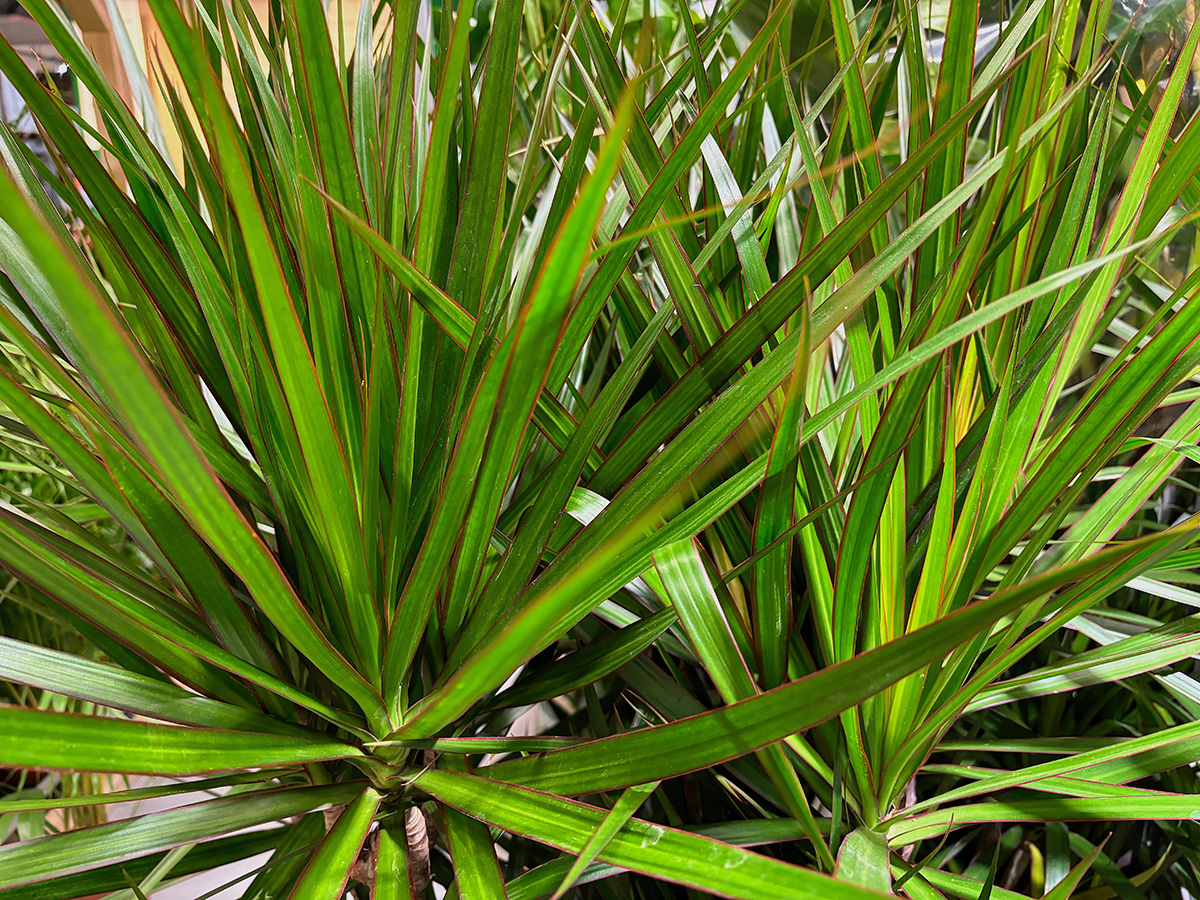Native to Madagascar, the Dragon Tree or Dracaena Marginata is a slow-growing succulent with long sword-like green leaves edged with a red hue. This is a great choice for newbie houseplant parents as it is extremely low maintenance and drought tolerant. In the right conditions, over time, this spiky little houseplant will develop into a small tree making a striking indoor feature without taking up much space.
Dracaena marginata is one of the 120 species of Dracaena in the Asparagaceae family; not to be confused with the popular African native D. fragrans, Corn plant and the dinosaur of the family D. draco. Tenerife boasts the oldest and largest D. draco in existence; El Drago Milenario at Icod de los Vinos rumoured to be 800 – 1000 years old! Standing around 21 metres tall, 20 metres wide with over 300 branches, it’s impressive and closely followed by a 600 year old Dragon tree situated at The Orchid Garden at Sitio Litre, Puerto de la Cruz; these giants would be difficult to squeeze into most houses so seek out the humble D. marginata houseplant alternative.
The main difference between D. marginata and D. draco is their sap. D.draco produces unusual resinous red sap which oozes like blood, supposedly dried dragon’s blood, from its bark and leaves when cut, quite a party trick, whereas D. marginata does not.
D. marginata plants maybe easy to look after but what is the secret to keeping Dracaena marginata happy and healthy? Read on.
Light
Situate your dragon tree in a bright spot out of harsh direct sunlight; pop it near a bright window where it can get about 10 hours indirect sunlight a day but this tolerant plant is able to cope with low light levels too.
Water
Let the top half of the soil dry out before re-watering. Dragon trees store water in their trunk so are able to cope with periods of drought making them a handy houseplant for busy people who may forget to water or go away a lot. Dragon trees are prone to root rot if overwatered so make sure your plant is not sitting in excess water for long periods of time.
Favour rain or deionised water over tap as hard water minerals and salts can hinder growth. Fill a watering can and leave it to acclimatise indoors to room temp before using it as water butts will be very cold throughout winter and dragon tree roots are sensitive to sudden cold temperature changes.
Your dragon tree will appreciate being misted a couple of times a week. Spray foliage with a fine mist of rainwater or, to increase nutrients as well as humidity, use Plantsmith Perfecting Houseplant Care Mist. For most of the year, regular household humidity is fine but when radiators are back in full swing, misting will help compensate for our homes’ dry air by temporarily increasing humidity surrounding the plant. Another tip is to group houseplant pots together or stand plants on a tray of pebbles, this will raise humidity, or invest in a humidifier.
Temperature
Optimum indoor growing conditions are around 16-24°C (60-75°F). 15ºC (59°F) and lower is a no no. Keep the temperature consistent and the plant away from draughty areas.
Soil
Use a pre-made cacti and succulent mix or repot your D. marginata in fresh free-draining peat-free compost and add a generous dose of sand and grit so water can easily drain through the pot rather than becoming waterlogged around roots.
Fertiliser
Dragon trees benefit from a feed once a month from spring to autumn but give it a rest over winter.
Plantsmith’s Fortifying Houseplant Feed & Tonic has a carefully balanced ratio of nutrients specifically designed for houseplants to encourage strong, healthy growth. To apply, shake the bottle then add 5 ml (approx. 4 pumps from 500ml bottle) or dilute one pipette from the 100ml bottle per litre of tepid rainwater; mix then water onto the soil.
Problem Solver
Keep dragon tree foliage out of reach of pets as the sap is mildly toxic if ingested.
Leaf Fall
Leaf fall, on the whole, is a normal part of the plant’s lifecycle but leaves will fall if under attack from sap sucking mealybug so give plants a good check and if leaves suddenly start to fall, this could be an indicator of invaders.
Yellow foliage
Yellow foliage can simply be a sign of old age and that a leaf has naturally reached the end of its life but it can also be a sign of many things from over fertilisation, low light levels, deficiency of minerals like magnesium to waterlogging. Excess watering will cause the lower leaves to turn yellow and drop off so let your plant dry out before re-watering.
Pests
Mealybugs and spider mites can pester dragon trees indoors. Look out for fine webbing on foliage or cotton wool-like fluff where leaves meet the stem. If found, remove by hand with a damp cloth and repel pests by regularly spraying with Plantsmith’s Protecting Bug Control Spray which is 100% vegan friendly and cruelty free. Plantsmith’s Protecting Bug Control Spray blends natural surfactants alongside iron chelate, manganese chelate and magnesium, which will help boost vigour and provides plants with a wealth of essential nutrients.
Propagation
There are three main ways to propagate dragon trees and by far the easiest is to root stems in a glass of water. Take a cutting, below a leaf node, and leave the stem wound to heal over for a few hours then remove leaves from the lower stem, submerge in the glass and place in a warm, bright, indirectly lit spot or dip your cutting in rooting hormone and place it in a pot of free-draining soil, and roots should start to appear in a month or so. The only difference is you cannot see the roots develop in the soil; you need to take a judgement call on when to transplant your cutting. Give your cutting a gentle pull and if there is resistance then the cutting will have rooted.
If you fancy more of a challenge then try air layering. Make an incision around the circumference of the stem with a clean sharp knife, then repeat lower down the stem leaving about a 10cm gap. Join the cuts by carefully slicing between the two rings in a couple of places so you can peel off the bark to reveal the cambium layer. This layer is where the plant generates new material and heals itself. Plant hormones known as auxins stimulate growth in cells.
To propagate, you need to scrape off this slippery cambium layer to get to the hard wood beneath. Cover the wound in growth hormone, wrap with moist water-retentive sphagnum moss and hold in place by securing clear plastic around it to hold the moisture in and allow light to penetrate, or buy a rooting ball which does the same job but holds material securely in place. Sit back and watch the roots grow… you may have a long wait but this process is immensely satisfying.
Fun Facts
Although you would need a high quantity of plants in a contained space, it is peace of mind to know D. Marginata was listed in NASA’s 1989 clean air study confirming this plant is capable of cleansing the air of harmful pollutants like formaldehyde, trichloroethylene and benzene.
Dragon trees are not fans of fluoride so do not water with tap water; in fact to many houseplants fluoride is a toxin and can build up in the soil so avoid using.
The name dracaena comes from the Greek for dragon.
